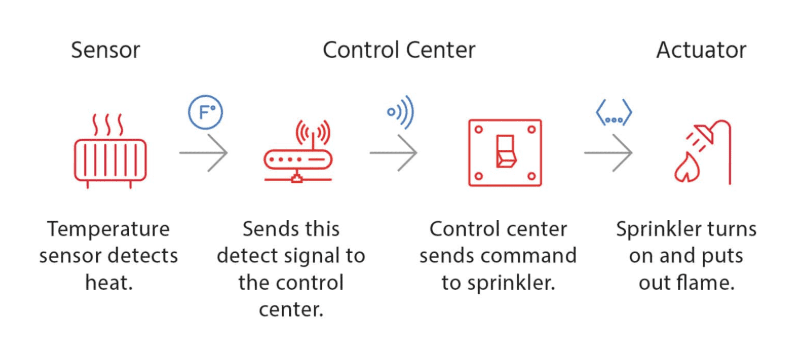The Industrial Internet Consortium (IIC) has added new definitions of ‘IoT sensor’ and ‘IoT actuator’ to its updated ‘dictionary’ of technical definitions for the industrial IoT (IIoT) sector. These terms describe similar IoT devices with dissimilar definitions, it says.
We consider these definitions, below.
The new volume of the IIC’s technical dictionary , version 2.2, also includes a revised definition for ‘digital twin’ and eliminates ‘virtual entity’ altogether in favour of ‘digital representation’. Other new terms include ‘physical entity’ and ‘physical entity of interest’, describing industrial assets that are being monitored or might be monitored by an IoT system.
The IIC says its Industrial Internet Vocabulary Technical Report, updated annually, should not be considered as a dictionary, as such. “Different from a dictionary, IIC vocabulary definitions can be replaced for their defining term to ensure clarity for all readers,” it says in a statement.
Which sounds confusing. The point of the resource, however, is clear: to reduce confusion by providing a common set of definitions for anyone working in IIoT across a range of industries. The definitions are presented as “defacto IIoT industry guidelines” on vocabulary, architectures, security, analytics, connectivity and business strategy.
Erin Bournival, co-chair of the IIC’s vocabulary task group and engineer at Dell EMC, explains: “Vocabulary terms can be quite concise, accurate and sometimes terse. However, a definition can be expanded to give the big picture for a broader understanding of the vocabulary term.”
She adds: “For example, the definition of digital twin is a digital representation sufficient to meet the requirements of a set of use cases. That definition can be expanded by adding the definition of digital representation and so on. While it may sound complicated, an agreed upon vocabulary helps authors create definitions and documentation that answers stakeholders’ questions.”
Let us consider the new definitions of ‘sensor’ and ‘actuator’, which both feature in industrial control systems. The terms are familiar, and their meaning is frequently confused. The IIC definitions, below, are short and simple, seek to clear up the confusion.

The difference is, just, that the sensor observes (records and receives in data) the properties of physical assets, such as industrial machines, and the actuator enables change in the same assets; in smart systems; this change is invariably spurred by the data captured by the sensor.
IoT sensor – An IoT device that observes one or more properties of a physical entity and converts those properties into information.
IoT actuator – An IoT device that can change one or more properties of a physical entity in response to received information.
US software developer Bridgera provides a useful, expanded definition, worth checking out for further explanation. “A better term for a sensor is a transducer. A transducer is any physical device that converts one form of energy into another,” it says.
“So, in the case of a sensor, the transducer converts some physical phenomenon into an electrical impulse that can then be interpreted to determine a reading. A microphone is a sensor that takes vibrational energy (sound waves), and converts it to electrical energy in a useful way for other components in the system to correlate back to the original sound.”
A classic example is an in-building fire system, where the heat sensor detects fire and the actuator turns on the sprinklers in response.
